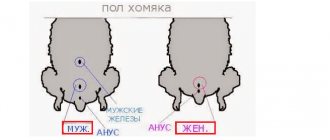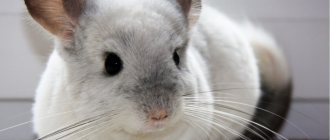Livestock » Pigs
0
3338
Article rating
Kira Stoletova
The pig is an animal that is extremely valued by people for its delicious meat. The pet was domesticated a long time ago, which is why all its habits have been well studied and rules for caring for it have been developed. Recently, raising pigs for sale at home has become very common. Such breeding requires a lot of effort, time and skills. In addition, in order to breed these animals, you need to know how long a pregnant pig walks.
How long does a pregnant pig walk?
Even simply raising these animals for yourself saves a lot of money and protects you from low-quality meat and many diseases. Farmers need to know how many piglets a pig bears, how to feed a pregnant pig, and how to prepare a pigsty for the birth of offspring. All these are important questions for those who decide to seriously engage in animal breeding.
Pregnancy in pigs
How long does a pig's pregnancy last? On average, about 110-120 days, that is, 4 months, but there are variations here too. It is almost impossible to accurately name the period during which a pig bears offspring, since it depends on the animal’s body. This period can either decrease to 101 days or increase to 126. How many offspring a pig bears depends on many factors. For example, stress can cause premature birth. So you need to be ready from the 110th day of pregnancy.
It is imperative to keep a pregnancy calendar for pigs and mark important dates in it. A table like this is very convenient and allows you to immediately find the answer you are looking for, rather than calculating values.
There are cases when pregnancy lasts less than the expected period. The mortality rate in such births is very high. In order for a healthy piglet to be born, the female must also be healthy. For breeding, a pig is selected at the age of about 5 years, but not more, and weighing 100 kg. In pigs weighing more than 100 kg, birth is very difficult and the likelihood of death increases.
Under normal conditions, a pig can give birth within 5-6 months from the moment of birth, but the offspring are unlikely to be viable, since the physical maturity of the sow is not yet complete. But by the age of 9-10 months, the pig is physically ready.
In order for the future sow to have time to conceive offspring, you need to bring her a good boar during the hunting period, which lasts from 2 to 4 days. Fertilization occurs best in the first days of the hunt, as this is when the pig is most active. If you don't make it in the allotted time, then it won't be of any use.
Pregnancy in pigs in days and gestation period varies depending on different criteria:
- season;
- living conditions created for animals;
- age category of the animal;
- the number of births suffered and the number of cubs in each litter.
For example, pregnancy in pigs goes faster if the female is young. Pregnancy also depends on the number of piglets the sow carries. In summer, pregnant females usually walk a little longer than in winter. The timing may also depend on the breed of livestock. For example, the Vietnamese potbelly can carry offspring for 114-118 days. But white large breeds, if you count in days, give birth on the 114th, and sometimes even on the 126th day. Average statistics show that 90% of individuals give birth on the 118th day of pregnancy.
What determines the duration and timing of different breeds?
The gestation period of any breed depends, first of all, on the size of the offspring. A large litter means a short gestation period. A pregnant pig never walks for less than 108 days. Therefore, with a large litter of 12-14 heads, birth will take place on the 108-110th day. For the same reason, low-fertility breeds have a longer gestation period.
Be sure to read:
Why do piglets need iron: preparations, injections, how much is needed and when to give, for what symptoms
Malaysian pigs have a shorter gestation period with approximately the same offspring. This is due to the characteristics of the breed. In some German breeds, due to the small offspring, the gestation period can be up to 130 days.
Factors influencing the duration of pregnancy
The duration of pregnancy, in addition to the breed and number of piglets in the litter, is influenced by the sow’s body. A weak animal may not endure childbirth or may produce weak offspring after a long pregnancy. In order for the birth to be successful, the female at the time of mating must weigh at least 100 kg.
Among other factors, only the time of year is important. Animals that were mated from February to March usually walk less pregnant. Summer mating will lead to a longer gestation period.
Determining whether a pig is pregnant at home
How can a novice farmer determine if a pig is pregnant at home? It won't be difficult to do this. Already on the 5th day there are signs of pregnancy. The main ones include:
- indifference to the surrounding world;
- lack of appetite even in the first days of pregnancy;
- vaginal discharge with a curd consistency;
- nipples prepare for feeding and turn red;
- rapid weight gain;
- apathy during the hunting period.
In the first days after fertilization, a pregnant female has a high risk of miscarriage. At this time you need to be especially careful. It is necessary to monitor the pigs' nutrition, since an unsuitable product can also lead to fetal loss. If a miscarriage does occur, it is not a problem, since immediately in the next critical period the pig begins to hunt again.
How to determine pregnancy in a pig? In addition to the signs listed above, there are a number of ways to determine pregnancy with varying degrees of accuracy, even in the first days.
Method one
This method is based on the reaction of females. The farmer presses on special so-called processes in the lumbar region and withers. If the female is not pregnant, then after alternate pressure she will bend at the withers and lower back, while the pregnant female will stand straight and calm. If it doesn’t work right away or the reaction is ambiguous, then this method can be repeated again. The guarantee is quite large - 84%.
Method two
The female is calmed down and placed on a flat area. Then they simply begin to stroke it in the direction from the shoulder blades to the sacrum. If the pig is not pregnant, then it will calmly bend, but the fertilized one will stand straight. This method provides a good guarantee that pregnancy has occurred.
Method three
This method is used only at later stages to find out about pregnancy. If gestation is calculated in days, then this method is not suitable; in this case, the duration of gestation can only be determined by ultrasound. Method number 3 is based on manually feeling the offspring by touching the pig's uterus. To do this, she must lie quietly on her side.
Method four
To determine pregnancy during her critical days, a boar is introduced to the female. If she is not pregnant, she will behave very actively. The pregnant uterus, on the contrary, will be very calm and most likely simply will not pay any attention to the boar. Of course, this method is relevant for farms with a large herd that has a permanent boar. 3 weeks after the critical days, the female is shown to a specialist to confirm conception. The doctor will perform a rectal examination and make a conclusion.
Conditions for the sow
Healthy offspring are born when the most comfortable conditions are observed during the sow's pregnancy. Particular attention must be paid to nutrition: it must be complete and balanced. Read how to raise pigs at home here.
- The animal is given the driest, cleanest, softest, warmest pen in the barn . The place is prepared especially carefully in winter.
- Try not to let other pigs enter her personal territory.
- Avoid stress, because despite the calm temperament during pregnancy, at the same time the animal is very timid and cautious.
- Providing complete, balanced nutrition. This is an important point, since after farrowing a pig loses a lot of weight and it is very difficult for her to recover, since piglets require nutrients and vitamins found in their milk.
Feeding table
Diagnostic methods for determining pregnancy
Laboratory diagnosis is the most reliable way to determine pregnancy today. Home methods are good, but do not provide a 100% guarantee of pregnancy confirmation. Laboratory diagnostics and tests are reliable, but they are much more expensive than home tests. They also require more time.
Method No. 1
This method is called the “Burkina Test” and gives a 98% guarantee that the pig is pregnant. This sample is usually taken 2 weeks after conception. To determine pregnancy, urine must be taken for analysis. Afterwards it is filtered and some chemicals are added, including hydrochloric acid and other drugs. Then this entire solution is boiled and cooled. Next, check the urine reaction. During pregnancy, the urine will turn brownish-red.
Method number 2
You can contact him after 22 days after the hunt. You can do a serological pregnancy test. This test is similar to a regular human blood test. The female's blood is taken for analysis and the presence or absence of pregnancy hormones is determined. It is not worth carrying out the procedure a few days after fertilization; you need to wait, since only in this case the test will show a true result. This procedure is rarely used, since it is expensive and also takes time, although the result is almost 100%.
Method number 3
Apply on the 26th day of pregnancy. It's called Doppler ultrasound. The essence of this method is to listen to the fetal heartbeat. This device is able to detect changes in blood flow that occur due to pregnancy. In addition, using a Doppler device, you can hear the fetal heartbeat and the movement of the placenta in piglets. This method is also used to control the course of pregnancy at a later stage. The method gives a 90% guarantee that the pig is pregnant. Of course, there is also a false result associated with infection in the uterus and embryo resorption.
Method number 4
Ultrasound examination using a scanner. An excellent device that gives a 100% guarantee, which is used in an industrial setting or on large pig farms. The behavior of animals during ultrasound is always calm; many animals treat this procedure with understanding.
Method number 5
This method is based on a histological examination. To do this, a biopsy of the uterus is performed. This method is also highly accurate, but is dangerous, since an inexperienced specialist can damage the fetus and lead to its resorption.
Method number 6
This method is based on the introduction of hormones that activate the pig to hunt if it is not pregnant, otherwise there will be no reaction to the injection of the drug at all. A good and harmless way.
Video
Experienced farmers tell how to determine if a pig is pregnant, as well as the basic rules for caring for it before and after farrowing in the following videos:
Graduated from MGRI named after. Ordzhonikidze. My main specialty is a mining geophysicist, which means a person with an analytical mind and varied interests. I have my own house in the village (accordingly, I have experience in vegetable gardening, horticulture, mushroom growing, as well as fiddling with domestic animals and poultry). Freelancer, a perfectionist and a “borer” regarding his duties. Handmade lover, creator of exclusive jewelry made from stones and beads. A passionate admirer of the written word and a reverent observer of everything that lives and breathes.
Found a mistake? Select the text with the mouse and click:
Tomatoes have no natural protection against late blight. If late blight attacks, any tomatoes (and potatoes too) die, no matter what is said in the description of the varieties (“variety resistant to late blight” is just a marketing ploy).
“Frost-resistant” varieties of garden strawberries (more often simply “strawberries”) need shelter just as much as ordinary varieties (especially in those regions where there are snowless winters or frosts alternating with thaws). All strawberries have superficial roots. This means that without shelter they freeze to death. Sellers’ assurances that strawberries are “frost-resistant,” “winter-hardy,” “tolerates frosts down to −35 ℃,” etc. are deception. Gardeners must remember that no one has yet managed to change the root system of strawberries.
The homeland of pepper is America, but the main breeding work on developing sweet varieties was carried out, in particular, by Ferenc Horvath (Hungary) in the 20s. XX century in Europe, mainly in the Balkans. Pepper came to Russia from Bulgaria, which is why it received its usual name - “Bulgarian”.
A new product from American developers is the Tertill robot, which weeds weeds in the garden. The device was invented under the leadership of John Downes (creator of the robot vacuum cleaner) and works autonomously in all weather conditions, moving over uneven surfaces on wheels. At the same time, it cuts off all plants below 3 cm with the built-in trimmer.
Humus is rotted manure or bird droppings. It is prepared like this: the manure is piled up in a heap or pile, layered with sawdust, peat and garden soil. The pile is covered with film to stabilize temperature and humidity (this is necessary to increase the activity of microorganisms). The fertilizer “ripens” within 2-5 years, depending on external conditions and the composition of the feedstock. The output is a loose, homogeneous mass with a pleasant smell of fresh earth.
From varietal tomatoes you can get “your own” seeds for sowing next year (if you really like the variety). But it is useless to do this with hybrids: you will get seeds, but they will carry the hereditary material not of the plant from which they were taken, but of its numerous “ancestors”.
Natural toxins are found in many plants; Those grown in gardens and vegetable gardens are no exception. Thus, the seeds of apples, apricots, and peaches contain hydrocyanic acid, and the tops and peels of unripe nightshades (potatoes, eggplants, tomatoes) contain solanine. But do not be afraid: their number is too small.
Convenient Android applications have been developed to help gardeners and gardeners. First of all, these are sowing (lunar, flower, etc.) calendars, thematic magazines, and collections of useful tips. With their help, you can choose a day favorable for planting each type of plant, determine the timing of their ripening and harvest on time.
You need to collect medicinal flowers and inflorescences at the very beginning of the flowering period, when the content of nutrients in them is highest. Flowers are supposed to be picked by hand, tearing off the rough stalks. Dry the collected flowers and herbs, scattered in a thin layer, in a cool room at natural temperature without access to direct sunlight.
Preparing for childbirth
As soon as it becomes known that the pig will bear offspring, you need to prepare for childbirth. First of all, you need to reconsider the sow's diet, since it must contain a sufficient amount of vitamins and nutrients for bearing future piglets. It is strictly forbidden to either underfeed or overfeed the animal.
If a pig is undernourished, the fetus may simply dissolve, and if it overeats, it will be difficult for her to give birth. An incorrect diet can also affect the health of future piglets, their presentation and quality of meat. To avoid infections, it is necessary to vaccinate and thoroughly disinfect the entire pigsty. You also need to remember about antihelminthic therapy about 1 month before giving birth.
Problems arise with the fact that during pregnancy the pig does not walk much on its own initiative. That is why she needs to organize a walk. It is extremely important to gently force the animal to move.
During childbirth, it is important to have a first aid kit on hand. If this is the first experience, it is recommended to call a veterinarian for consultation and delivery.
A sow definitely needs vitamins, minerals and quality nutrition, even if she has not yet produced offspring. If you feed a pig with low-quality products, problems may arise during farrowing, sick offspring will be born, or a miscarriage may occur. In order for the piglets to be born healthy and strong, the female must be well taken care of, and a properly balanced diet and walking regime must be selected. You should also remember that at least once during the entire pregnancy you need to show the animal to the veterinarian, then the piglets will be healthy and will soon bring a good income.
Duration of pregnancy and characteristics of the sow's condition
A pig bears piglets for a little less than 4 months, or, according to experienced pig breeders, 3 months, 3 weeks and 3 days, but this figure is average. In practice, the duration of the gestation period can be from 110 to 126 days , and for each specific pig it depends on a set of factors:
- breeds _ The uteri of more early maturing and smaller varieties (for example, Vietnamese potbellies) usually give birth several days earlier;
- age _ In young individuals, pregnancy ends later than in older pigs of the same breed;
- presence of previous farrows . Almost all pigs are characterized by a longer gestation of the first two pregnancies compared to all subsequent ones;
- number of piglets gestated . The duration of a small pregnancy is longer than that of a multiple pregnancy;
- size and body weight of the female . The sow, the largest in the age and breed group, bears offspring longer than her more “graceful” companions;
- weather conditions . Pregnancy that occurs during the cold season is usually shorter.
Obviously, the total gestational age of a pig is a purely individual value. Experienced farm owners believe that in order to avoid troubles, everything necessary for farrowing should be prepared by the 110th day from the moment of expected fertilization.
For the next one and a half to two weeks, the owner should carefully monitor the pig so as not to miss characteristic changes in behavior - restlessness, attempts to make a “nest,” etc., as well as such signs as sagging belly, swelling of the mammary glands and reddening of the nipples.
Useful tips
It is best for beginning breeders to invite a specialist for consultation. Only an experienced veterinarian can accurately determine the gestational age and give good recommendations. Inviting a doctor to your home is especially beneficial for those who keep a large herd: he will visit the farm and conduct a preventative examination of the entire herd.
For breeding individuals, neither the largest nor the thinnest females should be used. Individuals of average build are suitable for fertilization.
Before copulation occurs, it is necessary to improve the diet of both the female and the male.
Among other things, the farmer should take into account that all individuals can give birth at different times, depending on the presence of diseases and living conditions. It is best to treat diseases at an early stage. The farmer is required to reduce all risks that depend on him. How long a pig carries depends on many factors, and the farmer must know them all.
Caring for a pregnant pig
In large farms, females at equal stages of pregnancy are kept in 4 or 2 individuals in one pen. For a peasant home or country estate, this option is, as a rule, irrelevant. It is much more important for the owner to know that shortly before farrowing the queen should be moved to a separate pen with an area of at least 6 m2. It is necessary to make a small compartment in the pen for future piglets (the so-called “berlozhka”). If the pigsty is not heated, the enclosure is pre-equipped with a heating device (most often an infrared lamp plays this role).
The sow is carefully protected from drafts, cold and dampness. She should always have clean and dry bedding. In addition, it is important to ensure that the female does not experience stress . Therefore, her pen is located in the very depths of the pigsty. To keep the pig from worrying, the number of people caring for it is reduced to a minimum.
A pregnant pig is fed twice a day . When compiling a diet, it is important to take into account the fact that until the 80-85th day of pregnancy, embryos gain weight very slowly. During this period, the number of feed units received by the queen should be reduced compared to her usual consumption by approximately 20%. If this is not done, the pig may become fat, which will cause difficulties during farrowing and will subsequently affect the intensity of lactation. But in the last month of pregnancy, the rate of fetal growth rapidly increases, and the rate of feeding to the expectant mother should also increase.
An approximate daily ration depending on the season and gestational age of the pig (with an initial body weight of 130-150 kg) can be presented in the form of a table:
Regardless of the season, during pregnancy, the pig's daily diet includes 1.5-2 liters of dairy products (buttermilk, skim milk or whey), 40-45 g of table salt and 30-35 g of chalk . In addition, feed should be enriched with vitamins and microelements. This is usually done using ready-made premixes, but some pig farmers prefer to give their wards grain sprouts rich in biologically active components. The pig should have free access to drinking water throughout pregnancy.
To get healthy, strong offspring, the uterus needs to be given the opportunity to walk. In summer, she should graze outdoors most of the day, and in winter, she should spend at least 45 minutes a day outside (if the temperature outside does not drop below −20 degrees). Walking is usually stopped at 110 days . The vitality of future piglets is also increased with the help of preparations containing vitamins and iron compounds, which are administered to the pregnant pig about 3 weeks before farrowing. However, you should not prescribe this kind of medication yourself. The need for their use should be decided by a specialist.
Common problems and diseases in sows
Sometimes a sow after farrowing does not allow her cubs to come near her. The first reaction is often that the farmer himself feeds her piglets, fearing that they will get sick and die. A more reasonable course of action is to try to understand the reasons for this phenomenon.
In some cases, at this time any touch to the nipples is painful for the sow. Piglets usually, when nursing from their mother, squeeze the nipples tightly with their fangs, which in some cases causes pain to the mother. To get rid of this problem, it is enough to file the fangs. At the same time, the piglets will stop causing pain to the sow, she will relax, and the cubs will have the opportunity to feed from her.
On a note. In some situations, the sow is not a nursing mother; she may lie on her stomach, keeping the piglets away. Sometimes aggression towards the cubs is visible in her behavior. If this happens, the piglets have to be taken away from their mother.
Usually, refusal to eat is associated with fatigue from childbirth. As soon as the pig regains its strength, it will begin to eat normally. If this does not happen, the reason may be that there is a disease of the gastrointestinal tract. In this case, you must contact your veterinarian.
A common cause of mastitis is violation of the sanitary and hygienic conditions of keeping the sow. If measures are not taken to treat it, mastitis can become irreversible. In this case, one of the consequences is the cessation of the secretion of mother's milk. However, if you take the necessary measures, recovery will occur no later than in a week.
Treatment for mastitis is performed as follows:
- Immediately after the disease is detected, it is necessary to move the sow to a clean pen, and it must first not only be cleaned, but also disinfected.
- It is necessary to prepare abundant, dry and warm bedding and create conditions.
- During treatment, the feeding diet should be changed. Juicy food must be removed from it.
- Treatment occurs through intramuscular injections. In this case, antibiotics are administered to combat the disease.
For this purpose, streptomycin or penicillin is usually used, the dosage is usually from 200 to 250 thousand units dissolved in a half-percent solution of Novocaine.
On a note. It will be effective if the injections are combined with warm and cold compresses, as well as massage. It is recommended to use disinfectant and softening ointments for affected areas.










